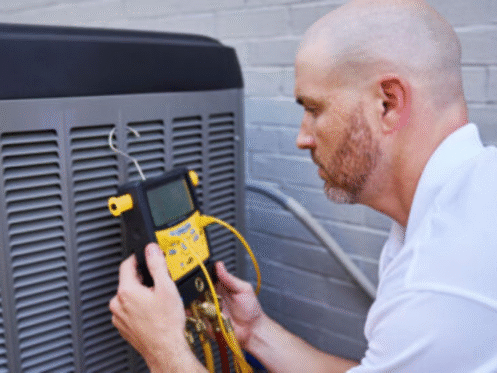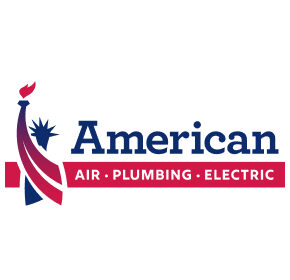HVAC condensation can prevent your system from performing at its optimal level. If left unattended, this condition can result in serious damage and even shorten your HVAC system’s life span. Not only can excess condensation necessitate replacement or repair, but this extra water can also make various components within your system potentially dangerous. Fortunately, there are viable ways to correct this common problem. Whether you suspect that your HVAC vents are leaking, spot an overflowing condensate drip pan, or suspect water damage, it is important to fix HVAC condensation problems as quickly as possible.
What Is Condensation?
Condensation is the process by which water changes from its vapor state into a liquid state. It is the reverse process of vaporization. In nature, condensation often happens when warm air makes contact with cool surfaces. For example, a pitcher of iced water will appear to “sweat” water droplets when left sitting in a warm room over time. The scientific reason is simple. Cold air does not hold as much moisture as warm air. When warm moisture-filled air makes contact with a cold pitcher, the air instantly cools down. As a result, the moisture in the air condenses into water droplets.
Similarly, HVAC systems work by pulling warm air from the room. Once inside the HVAC unit, the warm air cools down over evaporator coils. The cooled air then recirculates back into the room. Like the water droplets that form on an iced pitcher during a warm summer day, condensation forms in your HVAC unit whenever warm air cools down and releases its moisture. In a functional HVAC unit, this moisture drips into a pan and through a drain line until it eventually empties outside. However, malfunctioning HVAC systems can create excess condensation and eventually cause problems within the home.
What Can Cause HVAC Condensation Problems?
Some condensation is a normal by-product of HVAC operation. Condensation can also occur more often during the summer or if you reside in a generally warm and humid climate. However, constant dripping or thick moisture buildup can indicate larger issues within your system. Possible causes include mechanical problems, poor insulation, or defects within filters, drains, and condensate pumps.
Mechanical Problems Within an HVAC Unit
Mechanical problems are among the most common causes of HVAC condensation. Over time, HVAC units and ductwork can weaken and become more vulnerable to wear and tear. Signs of mechanical problems include unusual AC noises, a foul smell from the unit, leaking ducts, and weak or warm airflow. If you notice any of these symptoms, contact an HVAC professional to repair technical issues before they result in complete system breakdowns.
Poor Insulation
Poor insulation is another source of excess condensation. The primary cause of condensation on HVAC units is the temperature difference between cooler air inside the ducts and unit versus the warmer air outside. To protect your unit and ductwork, insulation creates a protective barrier to keep the warmer air away. If the surrounding insulation is worn-out or torn, condensation and excess moisture can accumulate throughout the system. Other types of insulation are water absorbent and soak up moisture, making them less effective over time. And even if you have fairly adequate insulation, improper sealing between connection points can also result in too much condensation. An HVAC professional can inspect your insulation and make corrections if needed.
Dirty Air Filters or Blocked Ducts
HVAC condensation can also indicate insufficient circulation or airflow. This is typically the result of a blocked duct or dirty air filter. For example, dust particles and contaminants can prevent air from moving freely throughout your HVAC system. When a dirty filter blocks airflow, the evaporator coil can eventually freeze. As ice on the coil melts during the AC cycle, the excess moisture causes condensation buildup. An HVAC technician can help you change air filters and also recommend the appropriate MERV rating so that your unit performs efficiently. HVAC professionals can also remove any harmful blockages from your ductwork.
Leaky Ducts
HVAC ductwork consists of conduits that are connected and sealed together. Any sealant that has been improperly installed or worn down over time can result in air leaks. These leaks reduce the efficiency and performance of your system. In addition, the poor air circulation can intensify HVAC sweating.
Excessive Moisture in the Air
Excessive indoor moisture can also create extra condensation. According to the Environmental Protection Agency (EPA), relative indoor humidity levels should be between 30% and 50%. Although some studies suggest that 40% to 60% is also an acceptable range, most experts agree that indoor humidity should never exceed 60%. Unfortunately, several factors can increase room humidity beyond the acceptable range. These can include humid summer weather, plumbing leaks, excessive dryer use, dampness in the basement, or poor ventilation. High relative humidity levels in your household increase the likelihood of HVAC condensation.
Clogged Drains
A clogged AC drain can cause condensation buildup. Within your system, the condensate drain and drain line work to carry moisture from the drain pan to the outdoors. Over time, however, the line can accumulate contaminants like dust, dirt, mildew, algae, or dander. Fortunately, an HVAC technician can perform a tune-up to flush or repair a clogged line.
Broken Condensate Pumps
HVAC systems often depend on gravity to direct condensation down and out of your home. For this reason, some households need a condensate pump to remove excess moisture. Unfortunately, a defective condensate pump will result in moisture or water spilling around your system. An HVAC professional can inspect the pump and quickly replace it if needed.
How Is HVAC Condensation Harmful?
Since some condensation is natural, homeowners often wonder why they should worry about how to fix condensation within their systems. The reason is that excessive moisture buildup can cause irreparable damage and have a negative impact on your home and health. These problems can include costly damage to installation, growth of black mold and mildew, or destruction of structural elements within the home.
Potential Damage to Insulation
Excessive condensation can eventually drip into the insulation of HVAC ductwork and pipes. This moisture compresses insulation and can compromise its thermal resistance (R-value). Lowered R-values mean that insulation becomes less efficient, causing your system to work harder and raising energy costs over time. Insulation that absorbs condensation can become overly heavy and result in ceiling leaks or even structural collapse.
Increase in Indoor Humidity
Sweating HVAC components can add extra moisture to the air. This can make your home far less comfortable on the hottest days of the year. In addition, too much indoor moisture can cause damage to wooden floors, wallpaper, furniture, or wall paint. At the very least, this type of damage can cause foul odors, and it is often very costly to repair.
Growth of Mold and Mildew
One of the most problematic risks of condensation is the potential growth of mold or mildew. As living organisms, mold and mildew thrive in warm and moist conditions. High indoor moisture from HVAC condensation creates the perfect environment for mold, mildew, or algae to grow. Mold spores can harm your family’s health by triggering allergies, and mold can even damage structural elements by eating wooden surfaces. It is important to resolve condensation problems early to prevent mold growth.
Water Damage to Structural Elements
If left uncorrected, condensation can result in water damage to all structural elements in modern homes. According to the National Association of Home Builders (NAHB), 92% of homes built in 2021 included wood frames. Moisture that reaches the structural components of your home can cause corrosion or decay. This decay can result in the loss of thermal capacity in the short run and structural breakdown in the long run. In addition, the water exposure can result in stains on walls, ceilings, or floors.
What Are Some Ways to Fix HVAC Condensation?
While HVAC condensation can cause problems, there are also viable ways to correct the issue. An HVAC company can help you come up with a comprehensive plan for removing moisture buildup and preventing excess condensation.
Reduce Humidity Levels
Reducing the overall humidity level is an important way to decrease HVAC condensation. Homeowners in humid states should invest in a dehumidifier. An HVAC company can install room units as well as whole-home dehumidifiers. You may also ask your HVAC technician about installing a smart controller to regulate the process and keep relative moisture at a comfortable level.
Keep Air Filters Clean
Dirty air filters restrict airflow. This causes your HVAC system to work harder and results in the overproduction of condensation. Replacing a dirty filter with a clean one can increase efficiency and may even reduce energy costs. According to the U.S. Department of Energy, a clean HVAC filter can lower utility costs by up to 15%. Talk to your HVAC technician about the best filters for your home.
Schedule HVAC Maintenance
Regular HVAC maintenance corrects hidden issues before they necessitate drastic repairs. During an HVAC tune-up, for example, a technician may use specialized equipment to clean ductwork, repair insulation, or fix drain lines. A professional will also be able to recognize any drain slope or sealant issues to ensure that your units perform at their full functional capacity.
Contact Us Today
It is important to fix HVAC condensation problems as soon as you identify them. Fortunately, a professional HVAC company can help. At American Air, Plumbing, and Electrical, we serve households in Oviedo, FL along with Orlando and the Central Florida area. We help you tackle the humid Floridian climate with the best duct cleaning, AC maintenance, and indoor air quality services available. We also offer smart thermostat installation as well as AC upgrades or repair. Contact American Air, Plumbing, and Electrical today for all of your HVAC needs.


